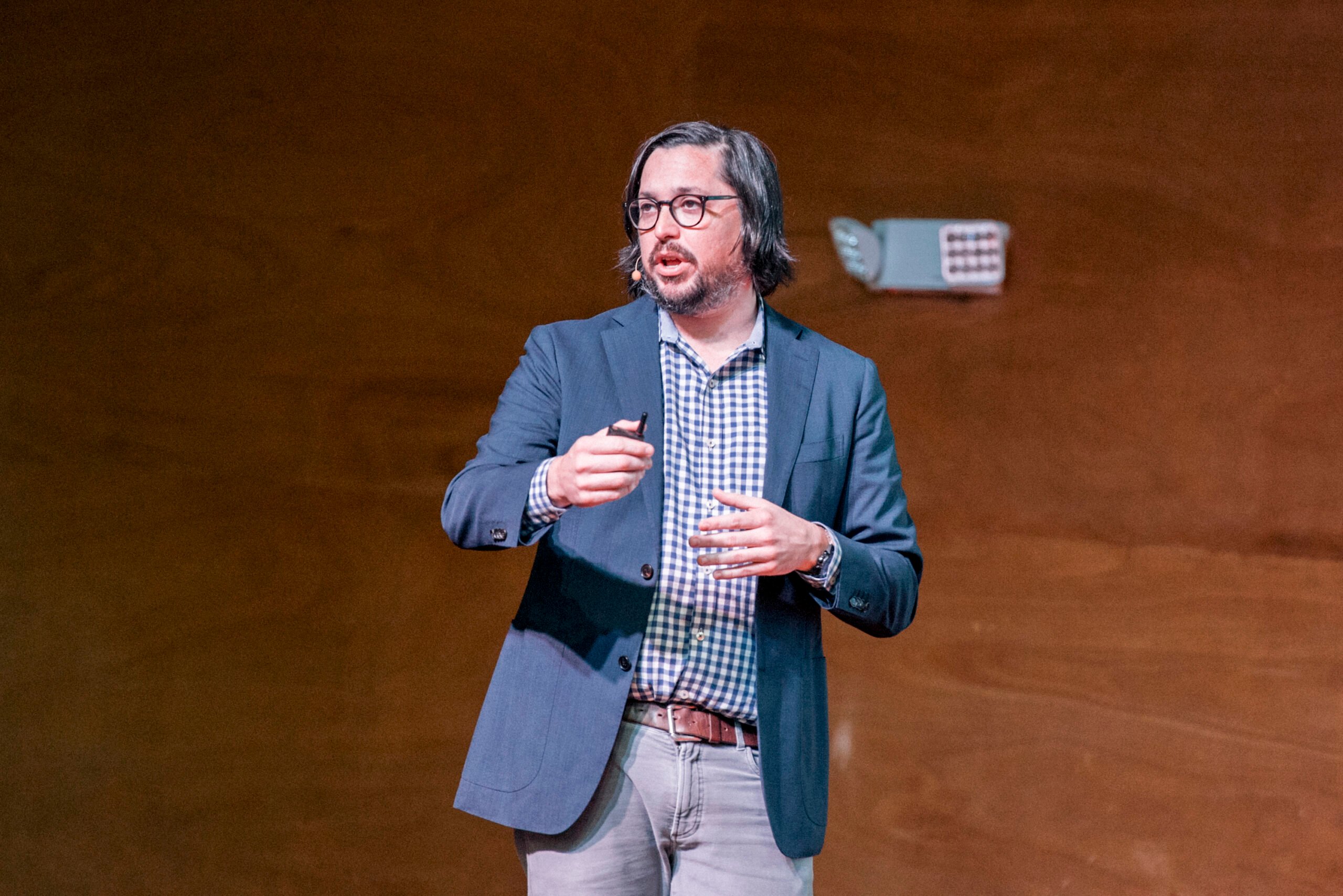Originally published on GritDaily by Safaque Kagdi on Nov. 13, 2014.
As of 2024, the global coffee market stands at $132.1 billion, with projections reaching $166.4 billion by 2029. This surge reflects deeper consumer demand for quality and ethical sourcing, areas where industry leaders like Matthew Swenson make an impact.
Matthew Swenson’s journey in the coffee industry began humbly. Like many young enthusiasts, he started as a high school barista. Even through college, he kept returning to coffee, brewing up skills that would eventually take him across the globe in pursuit of some of the greatest coffee on the planet. From small-batch startups like Chameleon Cold-Brew to industry giant Nestlé, where he served as director of coffee, Swenson’s passion only grew.
Today, as the vice president of coffee operations at Farmer Brothers, Swenson doesn’t just source beans, he builds connections. He’s partnered with rural communities worldwide, focusing on sustainable practices that benefit everyone in the supply chain. This approach resonates in an industry where ethical sourcing is more important than ever.
According to the International Coffee Organization, global demand for sustainable coffee has surged by more than 20% in recent years. Today, we hear from Matthew Swenson about his vision for expanding Boyd’s Coffee across the nation. We also explore what he sees as the key drivers fueling growth in the coffee industry.
You were appointed as vice president of coffee operations at Farmers Brothers in March this year. What is your vision for the expansion of Boyd’s Coffee nationally?
Boyd’s has been a cornerstone brand in the industry for decades. We not only want to honor that heritage, we also want to ensure we have built a proper infrastructure around the brand to ensure our efforts can drive success with our customers and end consumers.
When I joined the company, we had just started a brand portfolio transformation to help streamline our brand propositions as an organization. As you can imagine, Farmer Brothers is more than 100 years old, and for better or worse, we’ve collected a few brands over the years. So, we’ve reimagined our brands and distilled them down to three primary brand tiers – traditional, premium and specialty. Boyd’s is our proud premium brand.
For the Boyd’s brand in particular, we want to continue to maintain and build trust upon the brand that’s been built up for the last 100 years while also ensuring it can connect with our customers of today. We’ve created a bolder color scheme and have re-imagined our point of sale and coffee bar setups to help drive traffic.
We’ve done a lot of backend things as well, such as totally overhauling our DTC e-commerce solution, redesigning film, setting a transition timeline to 100% responsibly sourced coffee and others. Ultimately, with this business transformation, we want to be able to put the consumer first. We want to build trust and loyalty so we can all share in more than one delicious cup of coffee together.
In 2024, the coffee market is valued at $132.1 billion and is expected to reach $166.4 billion by 2029. What do you think are the drivers for this increase?
There are a few things driving this growth. First, the consumer markets have done an exceptional job of innovating and meeting the consumer where they are and beyond. In the past few years, we’ve seen a broad-based “premiumization” in the marketplace. We’ve seen consumers trade up from their mainstream brands into premium brands and from premium to specialty. We’ve seen innovative brew methods that charge a premium for by-the-cup brewing and we’ve seen a fundamental shift in consumption of cold coffee. All of these things drive additional dollars into the category and support those growth trends.
To keep up with consumer preferences in this area, we’ve seen a lot of food service locations and hospitality companies (hotels, convenience stores, etc.) look for a premium branded solution to convey quality to their customer base. Boyd’s has been a consistent choice for this customer and we’re leaning into this and ensuring we can provide the needs of each individual channel with this brand refresh.
In your opinion, has coffee consumption changed after the pandemic?
Channels, formats, temperatures, costs — a lot has changed. We’ve just recently seen the traffic within food service locations hit the highest levels since pre-pandemic times, but we’ve seen the transition to cold coffee continue to rise. We’ve also been going through a remarkable time within the coffee commodity market.
At the time of writing this, we are at 13-year highs in Arabica and an absolute all-time high for Robusta (coffee commodity markets). This has forced the coffee at coffee shops and grocery stores alike to rise, quite dramatically. All of these rapid changes reinforce our initial strategy of doubling down on our Boyd’s brand. As costs increase for roasters and our customers, the consumers need a solid brand they can trust with their hard-earned dollars.
With the growing awareness of health-conscious people seeking lower-caffeine beverages, how do you see the growth of Boyd’s Coffee?
We do see a small select consumer base looking toward decaf as an option for their lifestyle choices, but that’s been overshadowed by a younger generation that is moving away from cream and sugar and into cold coffee beverages.
